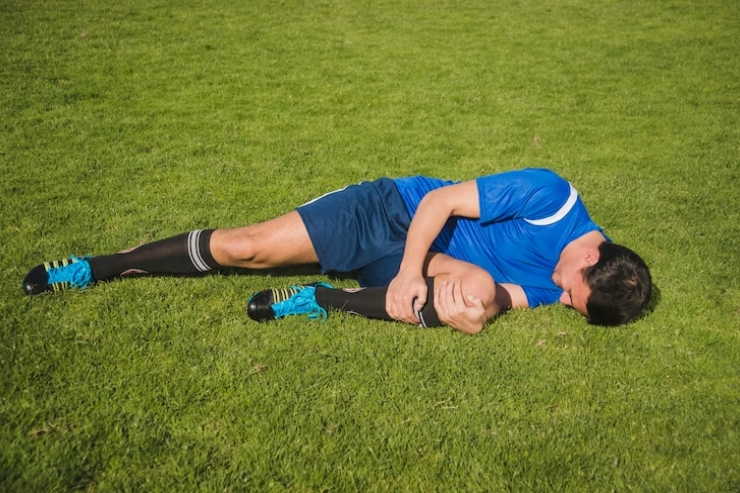


Sports rehab, also called sports rehabilitation, focuses on treating injuries and assisting athletes in recovering from sports-related injuries. After an injury, it uses a combination of manual therapy, exercises, and other methods to assist athletes in regaining their strength, mobility, and function. By enhancing flexibility, strength, and conditioning, sports rehabilitation can also be utilized to stop injuries from occurring again. Physical therapists and sports medicine professionals that have experience working with athletes and comprehend the unique requirements of sports-related injuries are frequently the ones who offer it.
Overuse: Constantly doing the same activity can wear down the body and result in problems including tendinitis, muscle strains, and stress fractures.
Insufficient exercise and conditioning can cause muscle weakness, unsteadiness, and diminished flexibility, which can increase the risk of injury.
Poor technique: Executing motions incorrectly can subject the body to excessive strain and raise the possibility of damage.
Insufficient warm-up: Skipping a pre-active warm-up might result in more muscle strains, sprains, and other injuries.
Environmental considerations: Playing outside in sweltering heat or bitter cold might increase the risk of injury.
Accidents: Unexpected incidents like falls or collisions with other players can sometimes result in injuries.
Sports injuries come in a wide variety of forms, and the severity of each type varies based on the sport involved and the circumstances surrounding the injury. among the frequent sports injuries are:
Strains and sprains: These injuries, which can be mild to severe, result in injury to muscles, tendons, or ligaments. Sprains include injury to ligaments, whereas strains refer to injuries to muscles or tendons.
Dislocations happen when a joint is moved out of its natural position, whereas fractures happen when a bone is shattered. These wounds may be excruciatingly painful, necessitating quick medical attention.
Traumatic brain injuries of the type known as concussions can happen when the head is struck or violently shaken. These can result in a variety of symptoms
Overuse injuries happen when a region of the body is stressed repeatedly over an extended period. Examples include the runner’s knee, tendonitis, and stress fractures.
Lacerations are cuts or open wounds, whereas contusions, sometimes known as bruises, happen when blood vessels under the skin are harmed. Sports involving contact, including football and hockey, frequently result in these wounds.
Heat-related illnesses: These can develop when the body overheats when exercising in hot and humid weather, including disorders like heat exhaustion and heat stroke.
When the body is exposed to extremely cold temperatures for an extended length of time, as happens when participating in winter activities like skiing and snowboarding, injuries like frostbite and hypothermia can develop.
Pain management: Using manual therapy, modalities like ultrasound or electrical stimulation, and targeted exercises, physiotherapy can assist to alleviate pain and inflammation related to sports injuries.
Rehabilitation: With exercises and other treatments, physiotherapy can assist patients in regaining strength, range of motion, and function after sustaining a sports injury.
Injury prevention: By locating and treating any underlying muscle imbalances, deficiencies, or biomechanical problems, physiotherapy can assist athletes in preventing further injuries.
Education: To prevent injuries, physiotherapists can instruct athletes on proper body mechanics, stretching, warming up, and cooling down procedures.
Return to sport: By reintroducing injured athletes to physical activity and sport-specific training gradually, physiotherapy can assist them in safely returning to their sport.
Manual therapy: This uses hands-on methods to improve mobility, ease muscle tension, and accelerate healing, such as massage, joint mobilization or manipulation, and stretching.
Overall, physiotherapy can help athletes recover quickly and safely from sports injuries and help them prevent further injuries. It can also assist athletes to prevent further injuries.
Information: Let Our Physiotherapists in Edmonton Assist You in Returning to Your Sport!
We are aware of how much your sport means to you, and our therapists are aware of how much you enjoy playing on the pitch or court. Sports significantly improve one’s well-being! At Creekwood Physiotherapy, we’ll put your performance, recovery, and comfort first because of this. Contact us right now to schedule an appointment at (780) 851-8200, and we’ll do everything we can to get you back playing your favorite sport.
Sports rehab physiotherapy is a type of physical therapy that focuses on rehabilitating athletes who have been injured or undergone surgery. The goal is to help athletes return to their sport as safely and quickly as possible.
Sports rehab physiotherapy can treat a wide range of injuries, including sprains, strains, fractures, dislocations, and post-surgical rehabilitation.
Sports rehab physiotherapy works by developing a personalized treatment plan that includes exercises, stretches, manual therapy techniques, and other interventions designed to promote healing and restore function.
The length of sports rehab physiotherapy will depend on the nature and severity of the injury or surgery. Your physiotherapist will work with you to develop a treatment plan that outlines the expected timeline for your recovery.
Sports rehab physiotherapy can help prevent injuries by identifying areas of weakness or imbalance and developing exercises and stretches to strengthen those areas. It can also help athletes develop proper form and technique to reduce the risk of injury.
Your physiotherapist may provide you with exercises and stretches to do at home to supplement your in-person sessions. It's important to follow their instructions carefully to ensure you're doing the exercises correctly and safely.




Reclaim Your Body, Recharge Your Life.
Join the Physiotherapy Revolution!